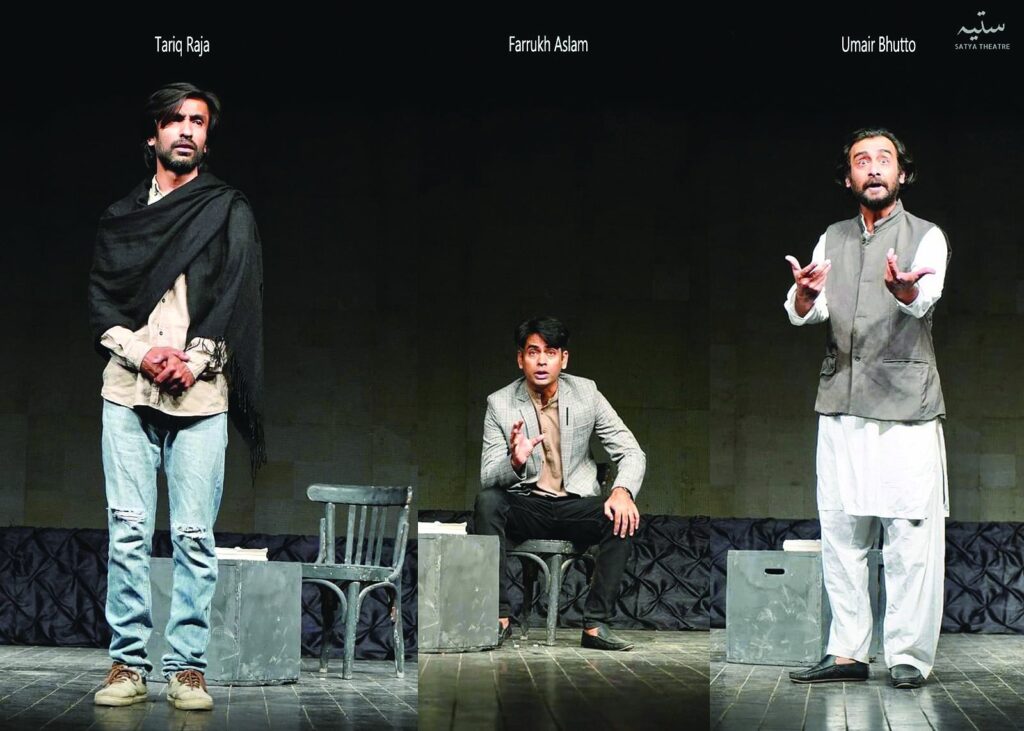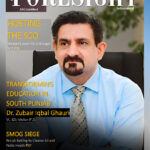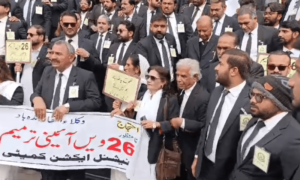KARACHI:
Sindhi language theatre has gone through many phases over the centuries. While the earliest forms of theatre included oral storytelling and group dance routines and date back to twelfth and fourteenth centuries, historians acknowledge that the first modern Sindhi play was Laila Majnu by Mirza Qaleech Baig in 1880. Since then, plays have been written and performed around the ‘Seven Queens of Sindh’ – Sorath Rai Diyach, Suhni Mehar, Umar Marvi, Noori Jam Tamachi, Sassui Punhu, Lila Chanesar and Moomal Rano – as well as many stories addressing the local issues of poverty, corruption, and more.
In recent years, theatre troupes around the province have sprung up, making isolated, individual efforts to present a better, updated and modern form of Sindhi theatre to the audience. Satya theatre is one such troupe. Comprising Tariq Raja, Farrukh Aslam and Umair Bhutto, Satya Theatre aspires to reshape the traditional formats and manifestations of Sindhi theatre.
Actor and the audience
The theatre group’s first performance is called Amar Kahani. Directed by Raja, it’s an hour-long performance composed of three short stories by the celebrated Sindhi author Amar Jaleel. Each actor, Bhutto, Raja and Aslam, perform one story each in what can be called a combination of oral storytelling and theatre.
One actor takes center stage and in essence, narrates a story to the audience, transforming through gestures and voice into all the different characters back and forth in an instant. Amar Kahani’s innovative approach shines with the performance eliminating all costumes, sets or music, only to focus on the actor’s body.
“Polish theatre director Jerzy Grotowski introduced the idea of the ‘poor theatre’ in the 1960s,” says Raja. “We adopted this form because we want Amar Kahani to travel everywhere, so that we could do it again and again, even hundreds of times, without being concerned about any external limitations, for practice, for fun, for an audience, for theatre, for everything.”
While Raja credits Grotowski, the tradition of minimalist, actor-centric approach to theatre has existed long before. Several practitioners in the 20th century responded to stimuli such as the economic conditions, artistic pursuits, experimentation, anarchic sentiments towards the spectacle-driven mainstream theatre and more, to strip away elements, laying the foundation for Grotowski’s Poor Theatre.
Timeless stories
For Satya Theatre, all of the aforementioned reasons sound valid since the institutional support for Sindhi theatre is almost nonexistent and troupes like theirs must fight many battles to keep going.
Amar Kahani, therefore, becomes a drop of water in the desert of Sindhi theatre. But the themes and stories it presents are as timeless and relevant as ever. The troupe shortlisted three of Jaleel’s stories – Mitti ja Marhun (Humans of Soil), Tareekh jo Qaffan (Shroud of History) and Pul-e-Sirat, all of which revolve address serious issues plaguing Sindh. Raja believes the stories are important to tell today.
“These stories were written many decades ago, but they are as relevant today as they were then. Amar Jaleel himself says that our society has remained almost unchanged in 50 to 100 years. We have made no progress at all.”
“We were looking for something light-hearted as it would attract and entertain the audience,” Raja continues. “But once I found Amar Jaleel, I realised something. He writes that if a people go through oppression and exploitation, they forget to laugh. Yet he makes us laugh and cry with his work. The characters are so ordinary and right out of our everyday lives. His work is powerful, and has a wonderful representation of the society we live in. We couldn’t find anything better than him in modern literature.”
So far, Satya Theatre has performed Amar Kahani eight times in Hyderabad, Karachi, Jamshoro, Larkana, Sehwan, Khipro and Sukkur since December 2021. The response has been wonderful, and Raja is ecstatic to see how the youth as well as the senior artists across the province have taken an interest in their initiative.
“It’s been quite dramatic. People get really emotional not only because the stories and the performances are so powerful, but because they don’t expect this kind of work to be presented in Sindhi theatre and within Sindh,” says Raja. “People have encouraged us a lot to continue. They say we have to bring our youth towards art and literature. People approach us after our shows on stage and adorn us with their Ajrak and chaadars.”
Raja adds, “The impact of Amar Kahani has been such that the people who had been in despair after trying for years to create quality theatre have woken up again. People like Ustad Nazir Shaikh, who has been in the theatre community since the 80s or 90s, has connected with Satya Theatre and wants to work together to promote quality Sindhi theatre. People around the province have become inspired. They see that you don’t need big budgets, huge lights and sets and costumes to perform good quality theatre.”
A new movement
The group intends to travel further with their show as it gains more momentum across the province. Their recent performance in Hyderabad caused quite a splash and Raja felt the group had finally found their audience and supporters. Raja is confident when he says that they have created something that could meet the international standards of quality in theatre.
“A lot of Sindhi theatre that’s happening is outdated, from the text to execution. But there are some groups like Murk Theatre in Hyderabad and Halffry Theatre Group in Larkana, who are trying to elevate the quality of theatre in the province. Islam Khaskheli, a fellow NAPA graduate from Khairpur, is doing good work doing theatre with children in his community. And now Satya Theatre has joined that pursuit too.”
However, performances are just one step of the movement that Satya Theatre is trying to initiate. “This is the beginning of our movement. Some of our goals are to perform quality Sindhi theatre around the province, reach the masses, and train the youth with our workshops so they can take this art form and spread it further. We also intend to translate and propagate books about theatre and the play scripts into Sindhi language, so they are accessible for everyone interested in learning.”
Raja shares that they already translated the late, great Zia Mohyeddin’s book Theatrics and received his blessing before the actor passed away in February 2023.
- Desk Reporthttps://foresightmags.com/author/admin/











